
Curator’s statement
At the end of February, I had the opportunity to join Max Miller of Tasting History on the first AmaWaterways Danube cruise of the 2025–2026 season. We were doing reconnaissance for his upcoming Danube cruise group in October. Since both the Tasting History YouTube channel and I are very much about the food, this article highlights the culinary side of our river cruise through Hungary, Slovakia, Austria and the Czech Republic.
The Fora Difference
Book with Ruth to access exclusive perks and experiences on your trip.
Killer perks
Free upgrades, spa credits and more—we got you
Personalized recs
Customized travel planning for your style
Insider knowledge
Expert advice from people who’ve actually been there
Where to stay by cruise
Unlock perks by contacting Ruth to book your trip.
The AmaMagna is twice the width of traditional European riverboats, and this extra space means four dining areas (instead of the usual two):
Main Dining Room: where incredible waitstaff serve à la carte breakfast, lunch and dinner. Menus and complimentary wine pairings change daily and feature Chef’s Recommendations, regional specialties and one night with a Chaîne des Rôtisseurs French menu.
Chef’s Table: The Main Dining Room already has excellent quality and plating, but here you are served an elevated set menu of seven courses with wine pairings.
Jimmy’s: Select dishes from the Main Dining Room menu are served family-style.
Al Fresco: With floor-to-ceiling windows (closed on our sailing due to the chilly weather), this intimate space at the front of the ship serves casual meals. There is also afternoon tea, late-night snacks and a Mediterranean-inspired dinner menu.
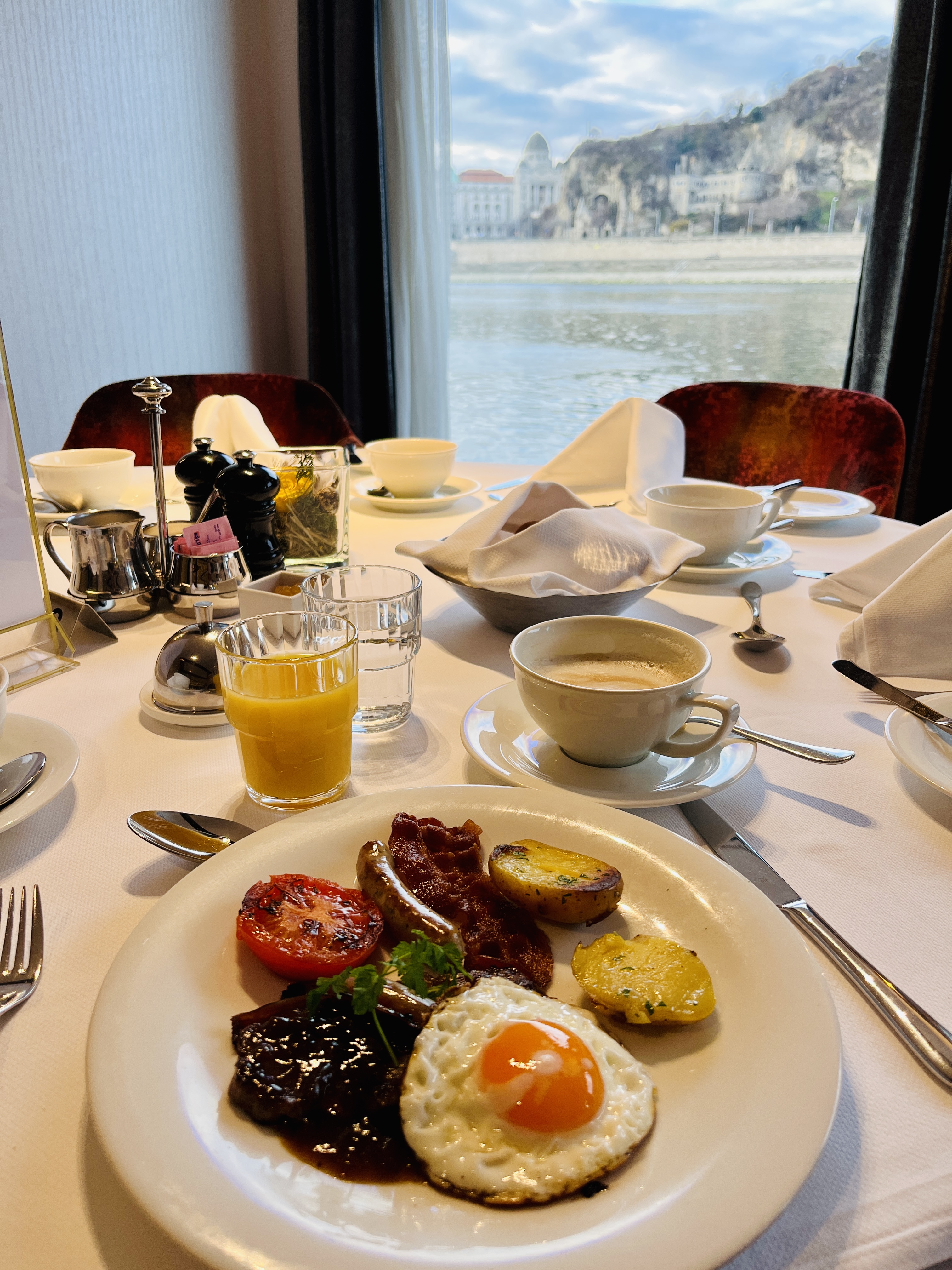
Every evening, there was a complimentary cocktail hour called Sip & Sail in the lounge. There was a featured cocktail of the day, as well as a nice selection of beers, wines and drinks. It was a great way to unwind after a day of touristing and chat with our fellow travelers.
And if you’re still thirsty after dinner, you can order drinks from the bar at very reasonable prices (only 6–8€!)
While we were never truly hungry with all the incredible food on-board, some of my best memories came from trying local specialties once on shore. Max introduced us to a series of regional sweets as we progressed down the Danube. These included Linzer Torte, Sacher Torte, Kaiserschmarrn (sort of a messed-up pancake). Coffee often accompanied each with a dollop of unsweetened whipped cream called schlagobers.
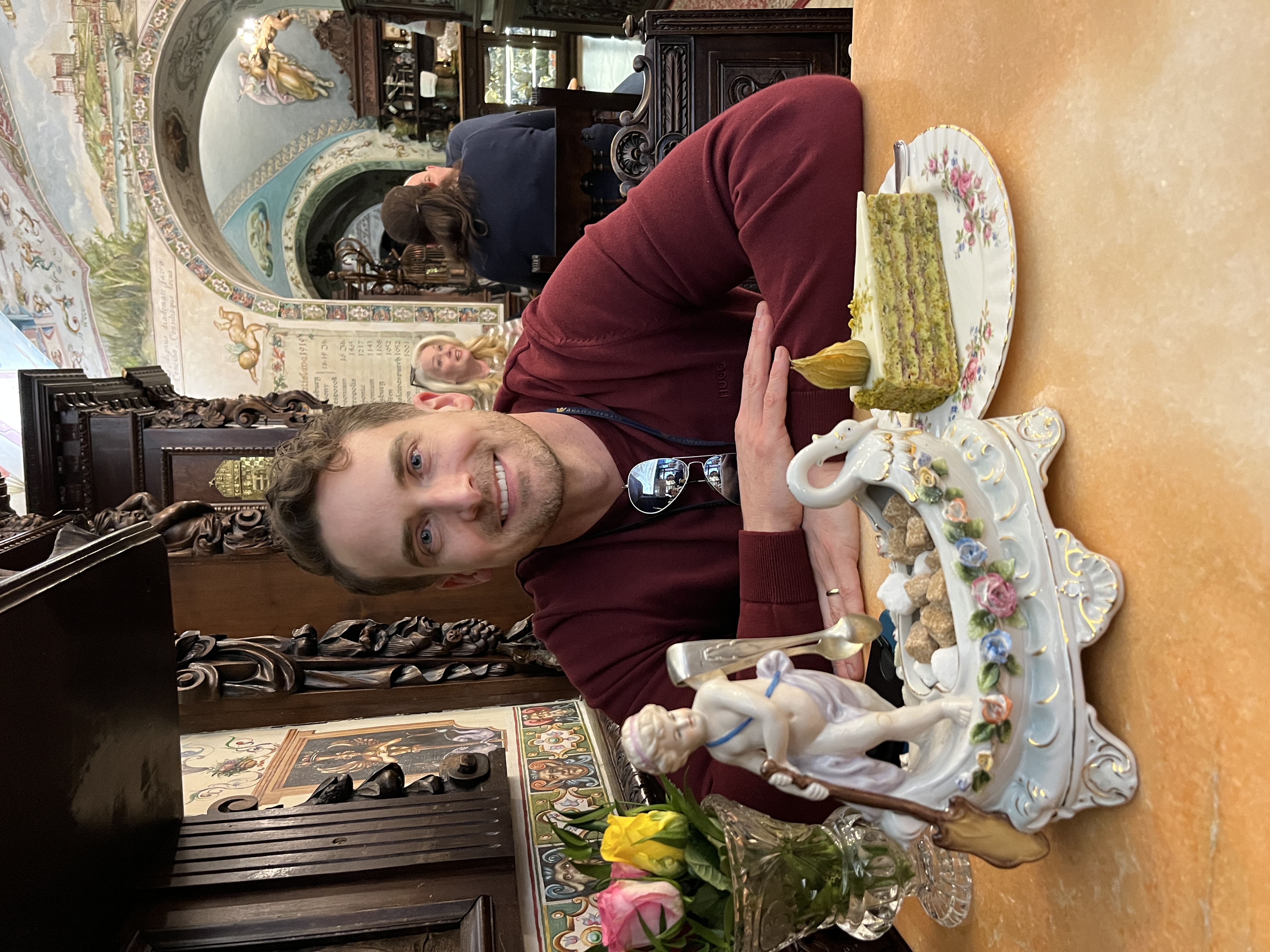
We also got great tips from AmaWaterways’ local tour guides, and here is a sampling of places and foods we discovered due to their recommendations:
Konditorei Kormuth, Bratislava: A coffee and cake shop in Old Town, where everything is embellished from the sugar bowl, to the walls, to the men’s room urinal.
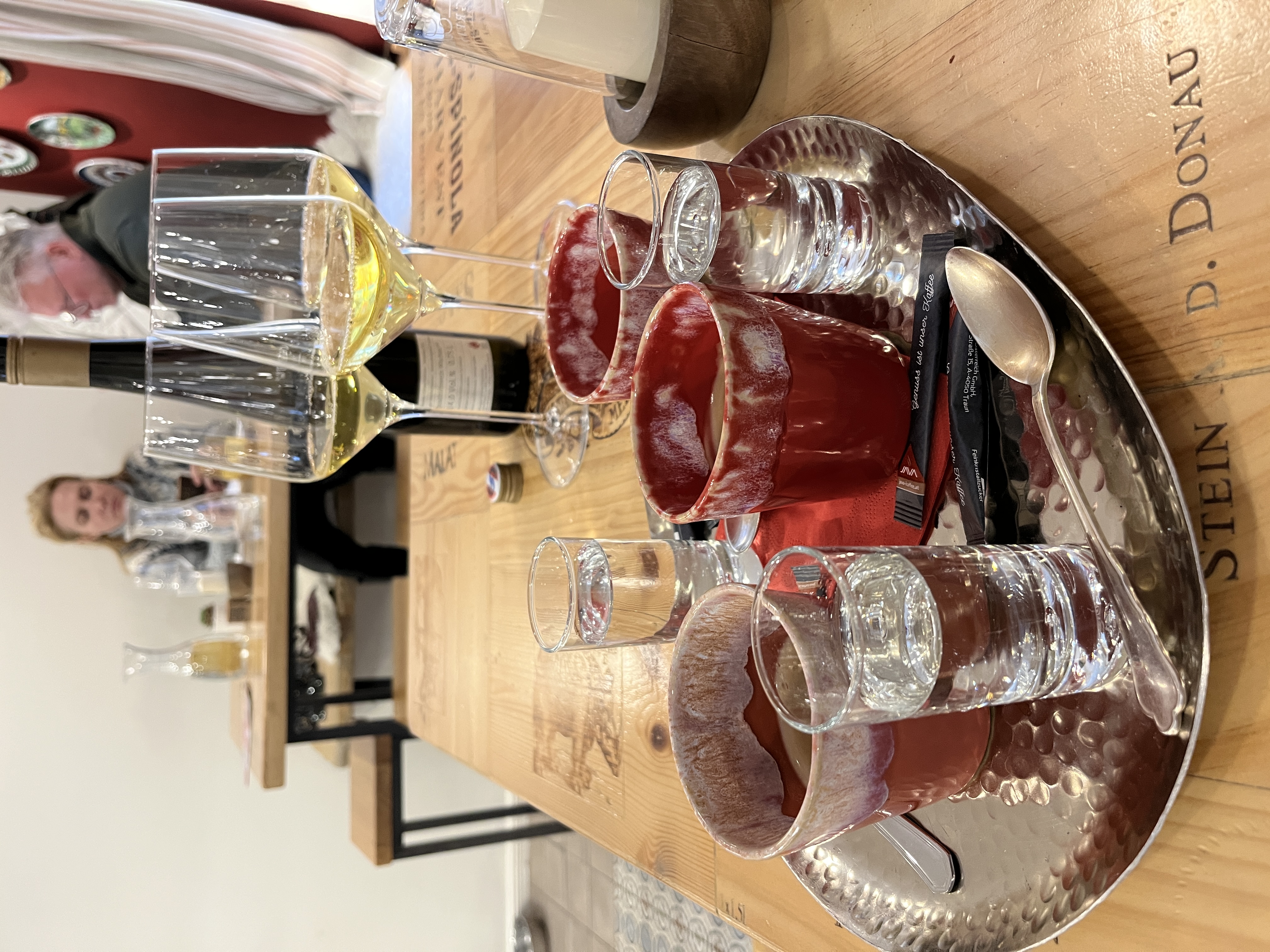
Schloss Greisslerei, Dürnstein: Austria’s Wachau Valley is known for its apricots, Riesling and Grüner Veltliner wines. While there was no fruit in-season, this lovely little bar-bistro-grocery store — which very much gave me Rose Apothecary vibes (IYKYK)—supplied us well with glasses of regional wine, cappuccinos to warm us up and a giant jar of apricot marmalade to take home.
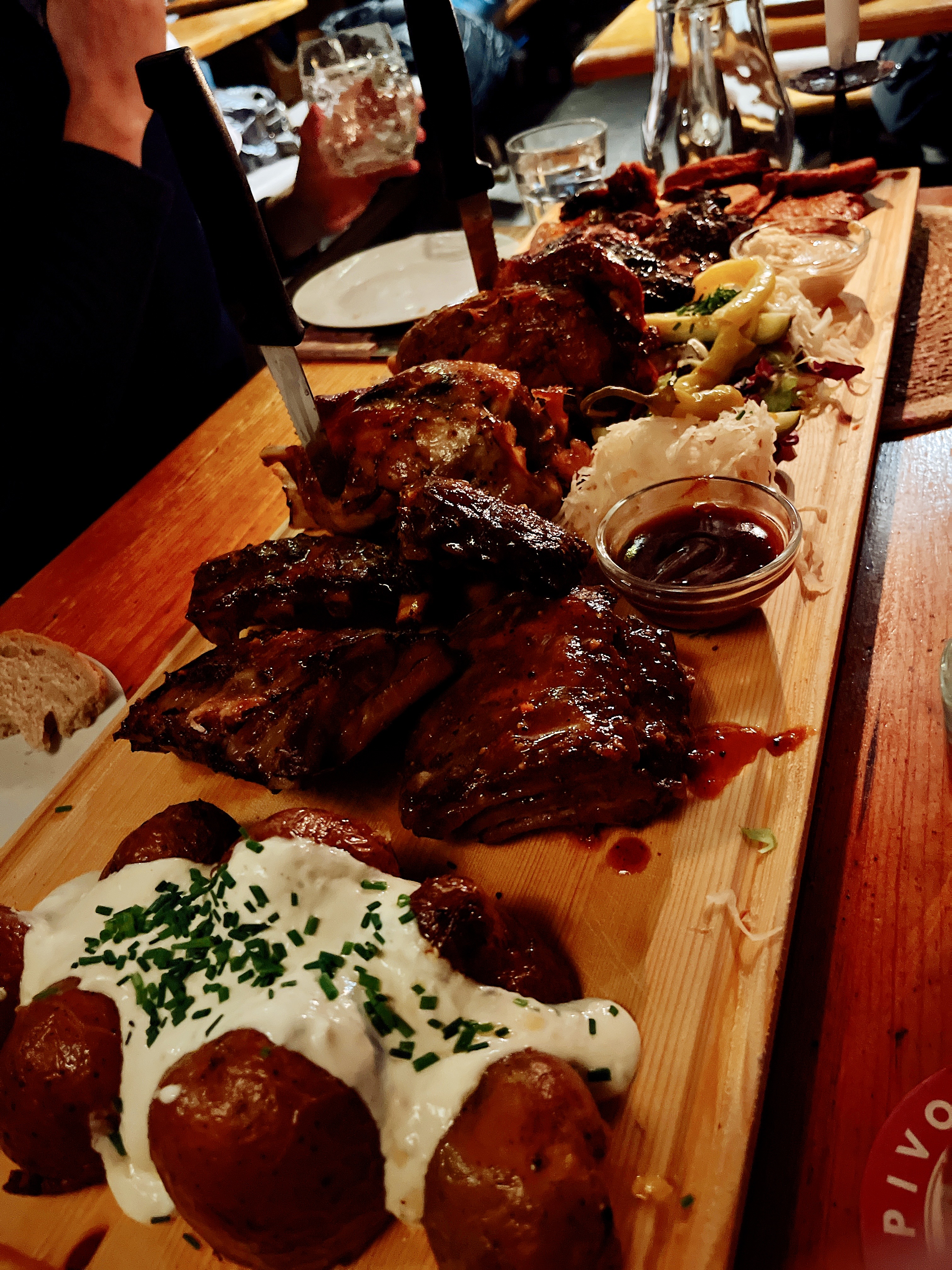
Krčma v Šatlavské, Český Krumlov: our guide was born and still lives in this charming Czech town. His recommended lunch spot was an atmospheric medieval tavern tucked into a small side street. Nothing whets the appetite like seeing meat sizzling in an open hearth right inside the entrance. The five of us shared a massive meat and potatoes platter. Everything was delicious, but the hands-down favorites were the fall-apart-tender pork knee (knuckle) and a divine sour cream sauce on the potatoes.
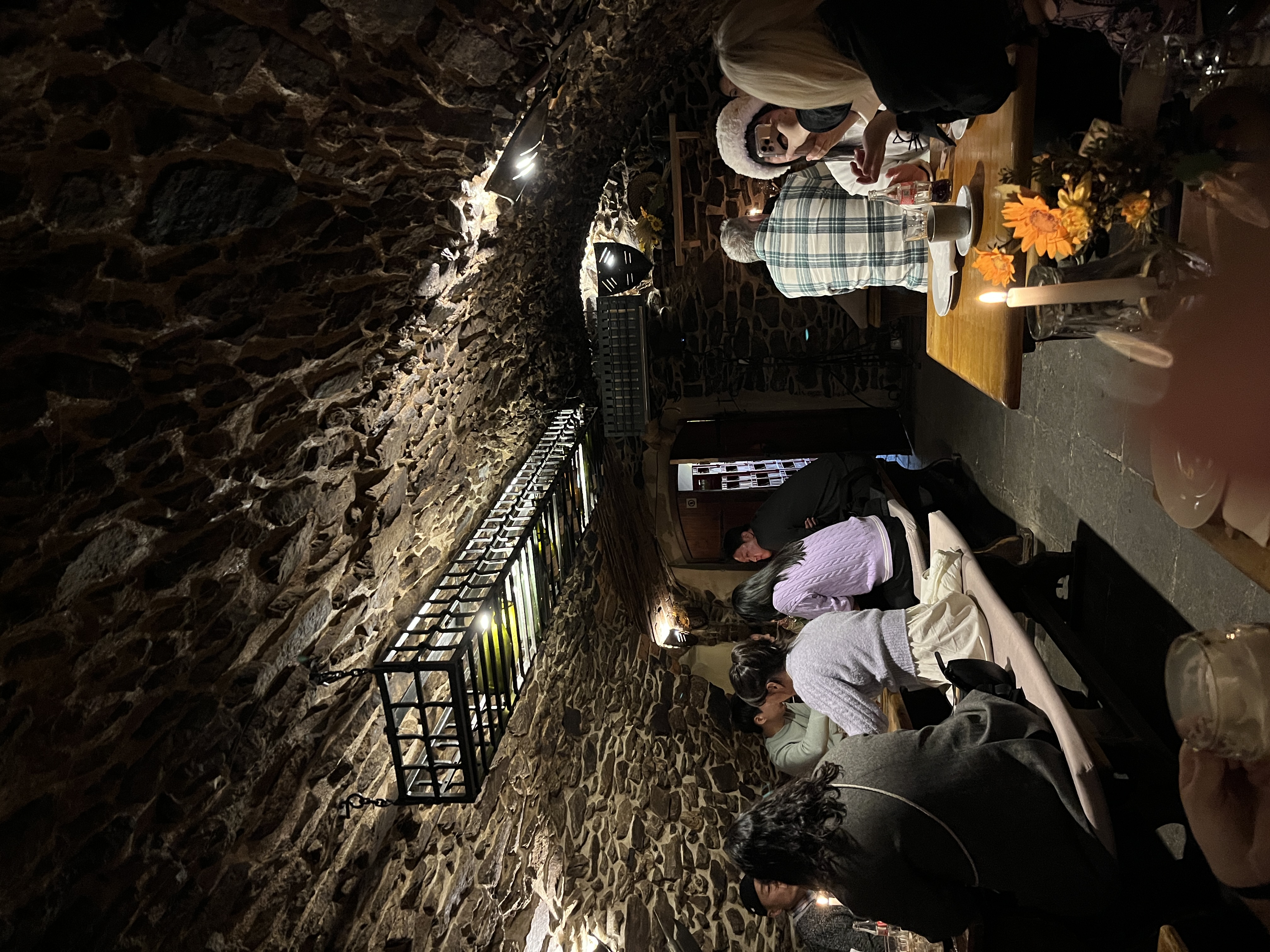
Urbanek at the Naschmarkt, Vienna: After our morning visit to Vienna’s Schönbrunn Palace, we accepted our guide’s offer to drop us off at this “nosh market.” It was a delightful change of pace instead of eating back on the boat. While walking through the many stalls, we ran into another group from our cruise who recommended Urbanek. It is a tiny space where every surface is crammed with offerings of cured pork and cheese. I asked the owners to make us a sampler plate that ended up including thinly sliced local ham with fine shavings of horseradish and foie gras on bread. We each had our favorites, and mine was a soft Austrian cheese covered with flowers.
Demel, Vienna: Mere amateurs would be full and tap out, but we pressed on in our pilgrimage to the legendary Imperial and Royal Confectioner to the Hapsburgs. Because we were traveling in the off-season, the entry line was relatively short. Our only issue was deciding between all the incredible pastries and cakes on the menu. The atmosphere, the service, the food and the most divine hot chocolate all lived up to their storied reputation.
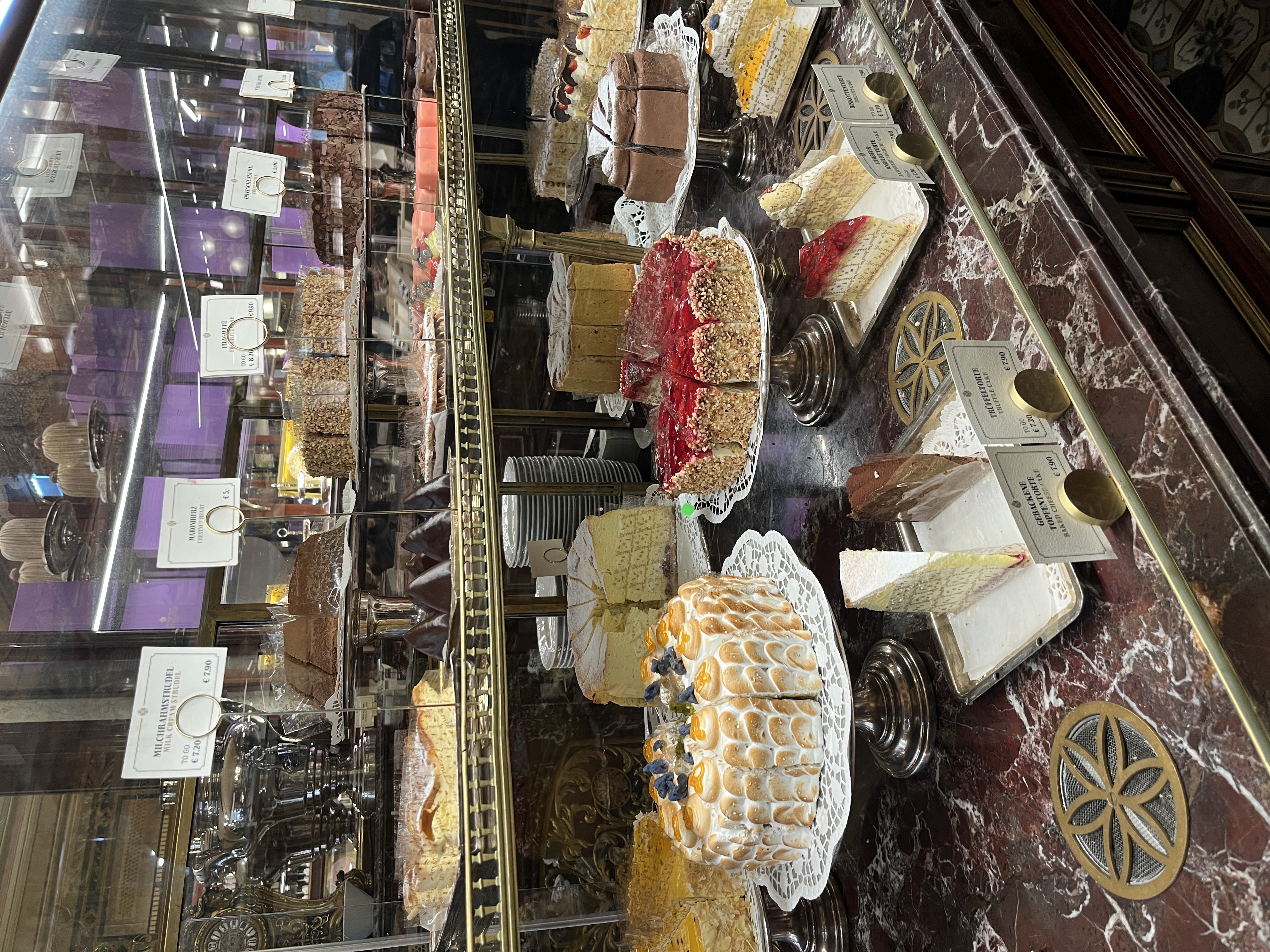
Budavári Rétesvár, Budapest: Our guide pointed out this tiny shop in the Buda Castle district that makes authentic Hungarian strudel. She urged us to try the cabbage variety. It was savory, a little tangy from some cottage cheese in the filling and delicious! We also tried the poppy-seed kind, which unexpectedly had some cherry added, and a more classic (for a reason) cheese strudel. All the strudels were wonderful, and I marveled at how such a thin layer of pastry could deliver such satisfying flakiness.
Towards the end of the tour, our guide praised a Hungarian herbal liquor called Unicom. It was first created in 1790 to aid a Hapsburg Emperor’s digestion.
One thing that did sound awesome, but I didn’t have time to try, was going to a Budapest ruin bar. I first thought that the ruins referred to Middle Age sites — but instead these ruins are Jewish Quarter buildings that were abandoned during World War II. Now they have found new purpose as eclectic, artistic spaces that can range from quaint craft beer halls to multi-level dance floors. I’m going to figure out a way to fit in a visit when I return inundefinedNovember!
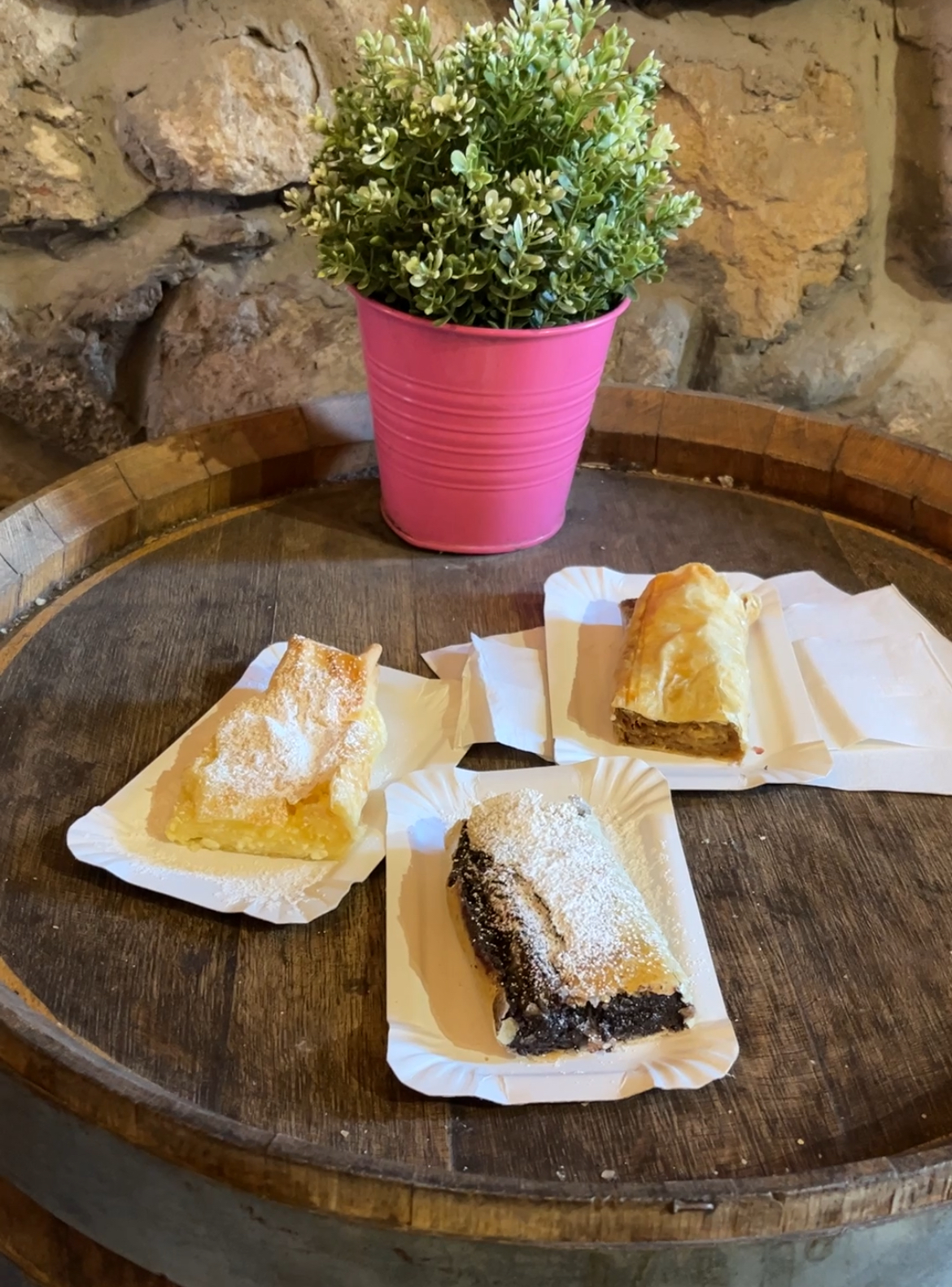
Traditional Hungarian strudel
Need to know
For more inspiration and insider recommendations, visit our Cruise page.

Travel Advisor
Ruth Walker

Get in touch with Ruth
Did you like this guide? Reach out to customize and book your own experience. Or, just to chat about travel in general.
You can expect a response from Ruth within 1–2 business days. You’ll also be subscribed to our traveler newsletter (you can unsubscribe at any time).